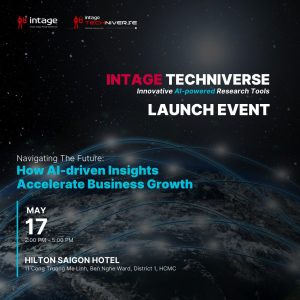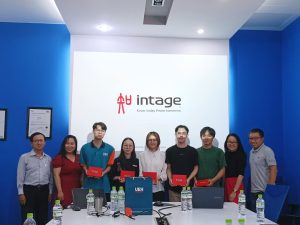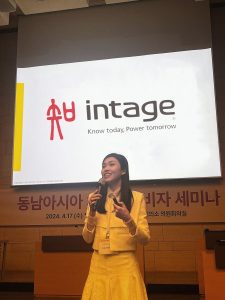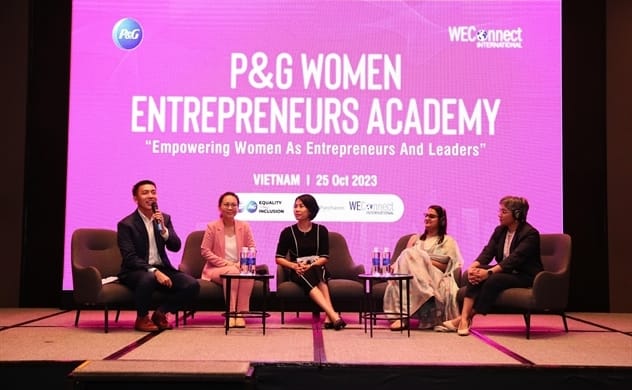
WEA is an initiative within P&G’s goal of spending $5 billion annually on women’s businesses by 2030
In the midst of a Wednesday morning in October, Ms. Shivangi Jain, adorned in a resplendent turquoise sari, participated in an unconventional seminar held in Ho Chi Minh City. Encircled by a predominantly female audience, with the exception of a handful of technical gentlemen, she engaged in the event’s discussions.
In a cozy room, 50 women of all working ages, all spreading out excitement and energy, gathered for the kickoff Women Entrepreneur Academy (WEA) initiative of Procter & Gamble multinational corporation (P&G).
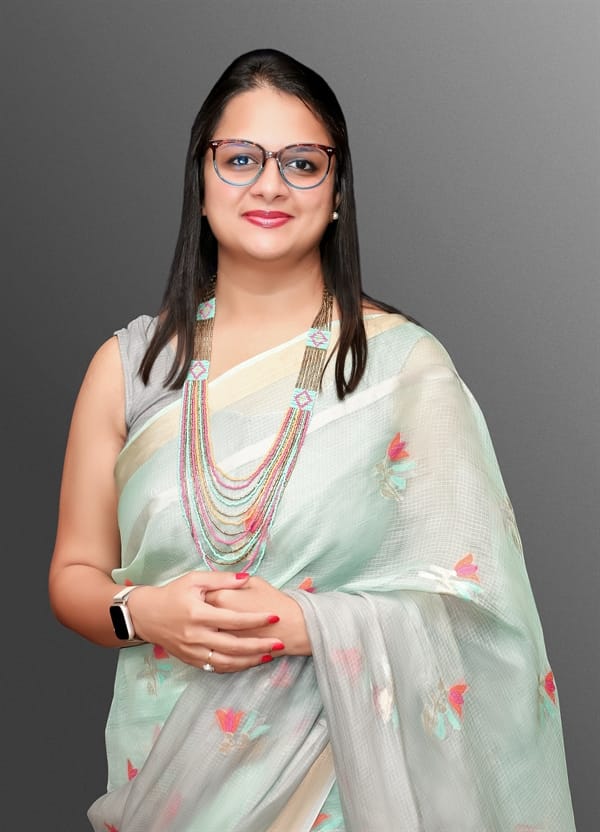 |
| Ms. Shivangi Jain, Senior Director, Head of Purchases for P&G Asia-Pacific region |
The WEA initiative is one of P&G’s key programs to promote gender equality and women’s empowerment in the Asia-Pacific region. Since partnering with WEConnect International in 2017, the program has been held in more than 15 countries, supporting over 1,000 women-lead enterpreneurs in accessing global P&G training courses on technical leadership skills, business strategy development, and procurement technology.
Present at the conference, the participants received face-to-face consultations before embarking on a journey of participating in online discussions over the next three to six months. Several participants of the program have become P&G’s external business partners or suppliers, and have accelerated their own business growth thanks to their newly acquired skills.
WEA is an initiative within P&G’s goal of spending $5 billion annually on women’s businesses by 2030. So far in 2021, the consumer group has gone three-fifths of the way towards achieving this goal.
“Depending on each country, spending will be different,” said P&G’s head of APAC purchasing, “What we target is we have a continuous momentum, we continuously increase the spend with the women entrepreneur.”
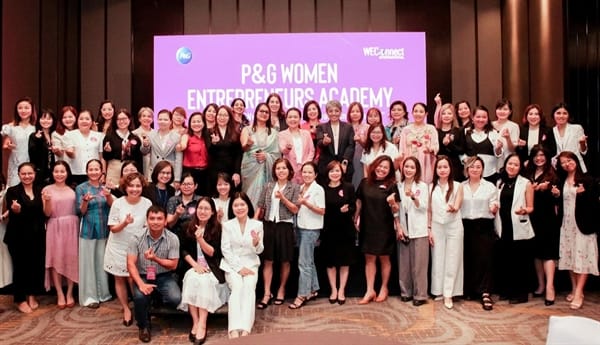 |
| The first WEA program in Vietnam benefits directly more than 50 female business owners and leaders of small and medium-sized companies |
The training program is not everything. After the program, the multinational consumer goods corporation aims to build a community, a support system. “The share of women working in Vietnam is higher than in other countries, and they have many role models,” the female director observed. “So it’s easier for them to draw inspiration from other women, learn from other women, share their challenges, and grow together.”
Overseeing a purchasing department with thousands of suppliers across the APAC region is difficult, and achieving diversity and gender balance in the supply chain is even more challenging. In Vietnam, 20% of spending is spent on female businesses. This number is expected to increase according to the acceleration set by the entire group. But how?
“We train them, and give them the opportunity to propose,” Mrs. Shivangi explained. Those are incentives they offer for gender equality in the supply chain. Indeed, they do not subsidize a standard of hiring suppliers; their standards remain the same. What P&G does is give female entrepreneurs the opportunity to propose, and they will win the ticket if it is a win-win solution for both parties.
In fact, their efforts towards supplier diversity include training for women entrepreneurs, who own the majority of small and medium-sized businesses, and are sometimes considered disadvantaged in the industry. Some occupations are dominated by men.
“We equip them with the knowledge, help them to understand how to run their businesses. Beyond that, we provide them opportunities to present in the bidding process, they can submit their proposals, and then let the best partners win.”
Globally, women make up 45% of P&G’s BOD seats. This number in Vietnam is higher, at 50%. Not only internally, P&G also reaches out to the supply chain with efforts to diversify its suppliers. Currently, 20% of our spending in Vietnam is going into women entrepreneurs. “What is essential is that we keep the momentum”, Mrs. Shivangi feels optimistic.
“What do you advise a business who wants to include E&I?”, that question from the reporter made Mrs. Shivangi reminisce her second maternity leave. “When I gave birth to my second child, my first son was 5 years old,” Ms. Shivangi recalled, “and I had no idea what he was up to.”
After finishing her six months of maternity leave, the mother of two children decided to take another six months off. “I think it’s the best decision I’ve made in my life,” she said about the time she spent with her two children when they needed her the most.
“Start from the top. Put the right policies and frameworks. Provide the culture which is more inclusive, a support network, policy which is reliable for all. Then a company can drive E&I.”, advised the woman with 17 years of experience working at P&G.
E&I is not just an organizational strategy, it’s a business strategy. It’s about tapping into a diverse set of ideas, talents, and perspectives. It’s proven that companies with a strong E&I culture outperform others.
One key to success is commitment from the top. Senior leaders need to understand the importance of E&I and that they’re missing out on a wide range of talent if they’re not driving it. They also need to create a more comprehensive and inclusive culture where everyone feels comfortable bringing their authentic selves to work and is confident that they can succeed.
At P&G, they put a lot of effort into creating a culture of E&I. Nearly two decades of working with an organization with more than 130,000 employees worldwide makes Ms. Shivangi feel that E&I has always been a part of our strategy. “I have access to all policies in different stages of life”, she said humorously.
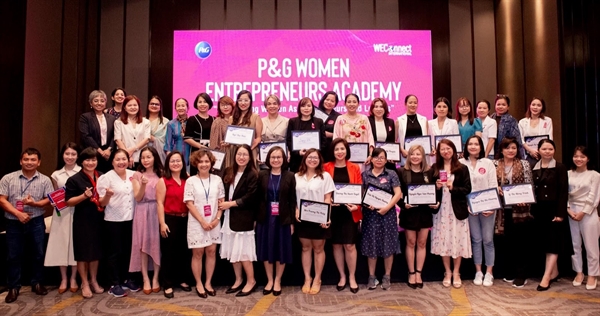 |
| Inspired by P&G’s goal, many of its suppliers, agencies, and partners have hired more women into key roles within their organizations |
“Such a strong culture we have,” she said, “that the need of an employee and the need of the company are inseparable.” It is a culture that if an employee comes to ask for something which is needed for their lives at that point of time, the companies make all the efforts to make it happen.
Inspired by P&G’s goal, many of its suppliers, agencies, and partners have hired more women into key roles within their organizations, including in manufacturing, logistics support, and media production, where gender bias has previously limited women’s opportunities.
“We are optimistic that other companies will take inspiration from our efforts to build an equal world”, said Ms. Shivangi.
